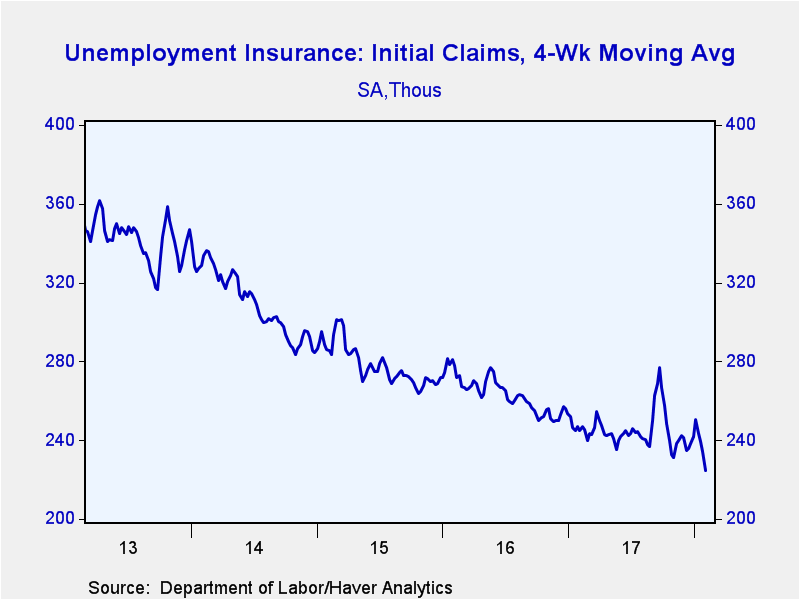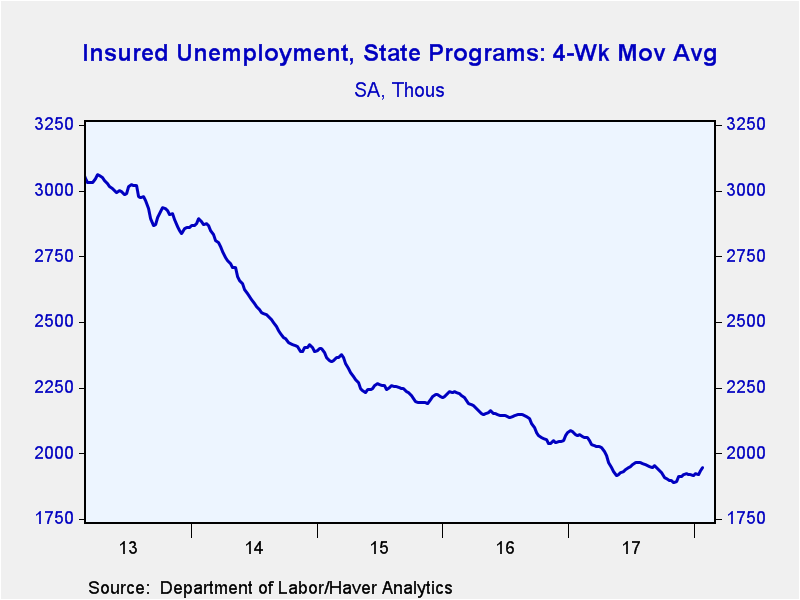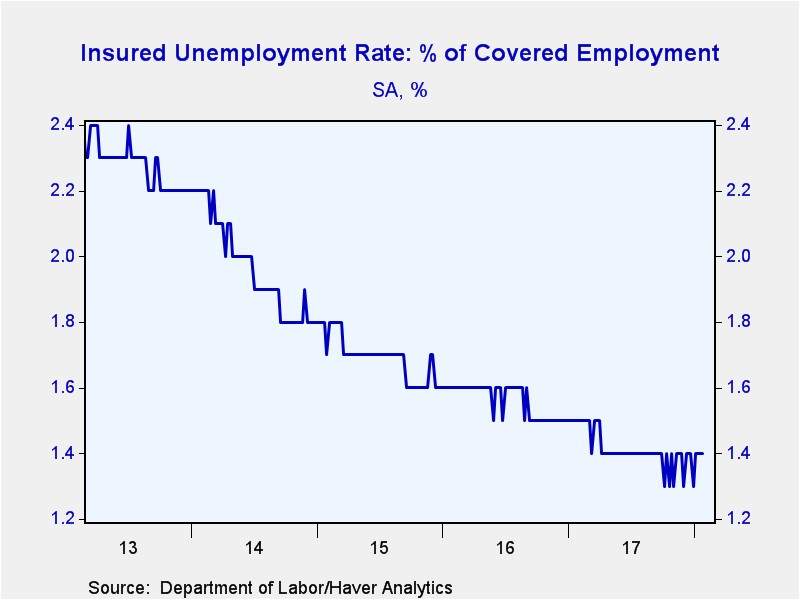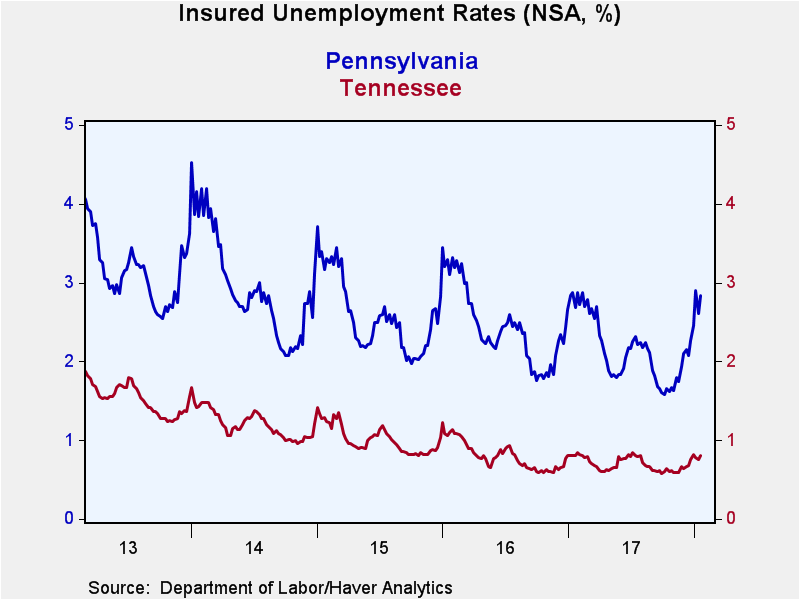 Global| Feb 08 2018
Global| Feb 08 2018U.S. Initial Unemployment Insurance Claims Decline
by:Tom Moeller
|in:Economy in Brief
Summary
Initial claims foe jobless insurance fell to 221,000 (-6.8% y/y) during the week ended February 3 from an unrevised 230,000 claims in the prior week. Expectations had been for 234,000 claims in the Action Economics Forecast Survey. [...]
Initial claims foe jobless insurance fell to 221,000 (-6.8% y/y) during the week ended February 3 from an unrevised 230,000 claims in the prior week. Expectations had been for 234,000 claims in the Action Economics Forecast Survey. The four-week moving average declined to 224,500, the lowest level since early-1973. During the last ten years, there has been a 74% correlation between the level of initial claims and the m/m change in nonfarm payrolls.
In the week ended January 27, continuing claims for unemployment insurance declined to 1.923 million (-7.0% y/y) from 1.956 million. The four-week moving average of claimants rose to 1.946 million.
The insured rate of unemployment held steady at 1.4%.
Insured rates of unemployment varied widely by state. During the week ended January 20, the lowest rates were in Florida (0.55%), North Carolina (0.56%), Georgia (0.78%), Tennessee (0.80%), Indiana (0.81%) and Arizona (0.83%). At the high end were Alaska (4.27%), New Jersey (3.01%), Connecticut (3.01%) Montana (2.88%), Rhode Island (2.85%) and Pennsylvania (2.83%). These state data are not seasonally adjusted.
Data on weekly unemployment insurance are contained in Haver's WEEKLY database and they are summarized monthly in USECON. Data for individual states are in REGIONW. The expectations figure is from the Action Economics Forecast Survey, carried in the AS1REPNA database.
Factors Affecting the Labor Force Participation Amongst People Ages 25 to 54 from the Congressional Budget Office can be found here.
| Unemployment Insurance (SA, 000s) | 02/03/18 | 01/27/18 | 01/20/18 | Y/Y % | 2017 | 2016 | 2015 |
|---|---|---|---|---|---|---|---|
| Initial Claims | 221 | 230 | 231 | -6.8 | 245 | 263 | 278 |
| Continuing Claims | -- | 1,923 | 1,956 | -7.0 | 1,962 | 2,136 | 2,267 |
| Insured Unemployment Rate (%) | -- | 1.4 | 1.4 |
1.5 |
1.4 | 1.6 | 1.7 |
Tom Moeller
AuthorMore in Author Profile »Prior to joining Haver Analytics in 2000, Mr. Moeller worked as the Economist at Chancellor Capital Management from 1985 to 1999. There, he developed comprehensive economic forecasts and interpreted economic data for equity and fixed income portfolio managers. Also at Chancellor, Mr. Moeller worked as an equity analyst and was responsible for researching and rating companies in the economically sensitive automobile and housing industries for investment in Chancellor’s equity portfolio. Prior to joining Chancellor, Mr. Moeller was an Economist at Citibank from 1979 to 1984. He also analyzed pricing behavior in the metals industry for the Council on Wage and Price Stability in Washington, D.C. In 1999, Mr. Moeller received the award for most accurate forecast from the Forecasters' Club of New York. From 1990 to 1992 he was President of the New York Association for Business Economists. Mr. Moeller earned an M.B.A. in Finance from Fordham University, where he graduated in 1987. He holds a Bachelor of Arts in Economics from George Washington University.










